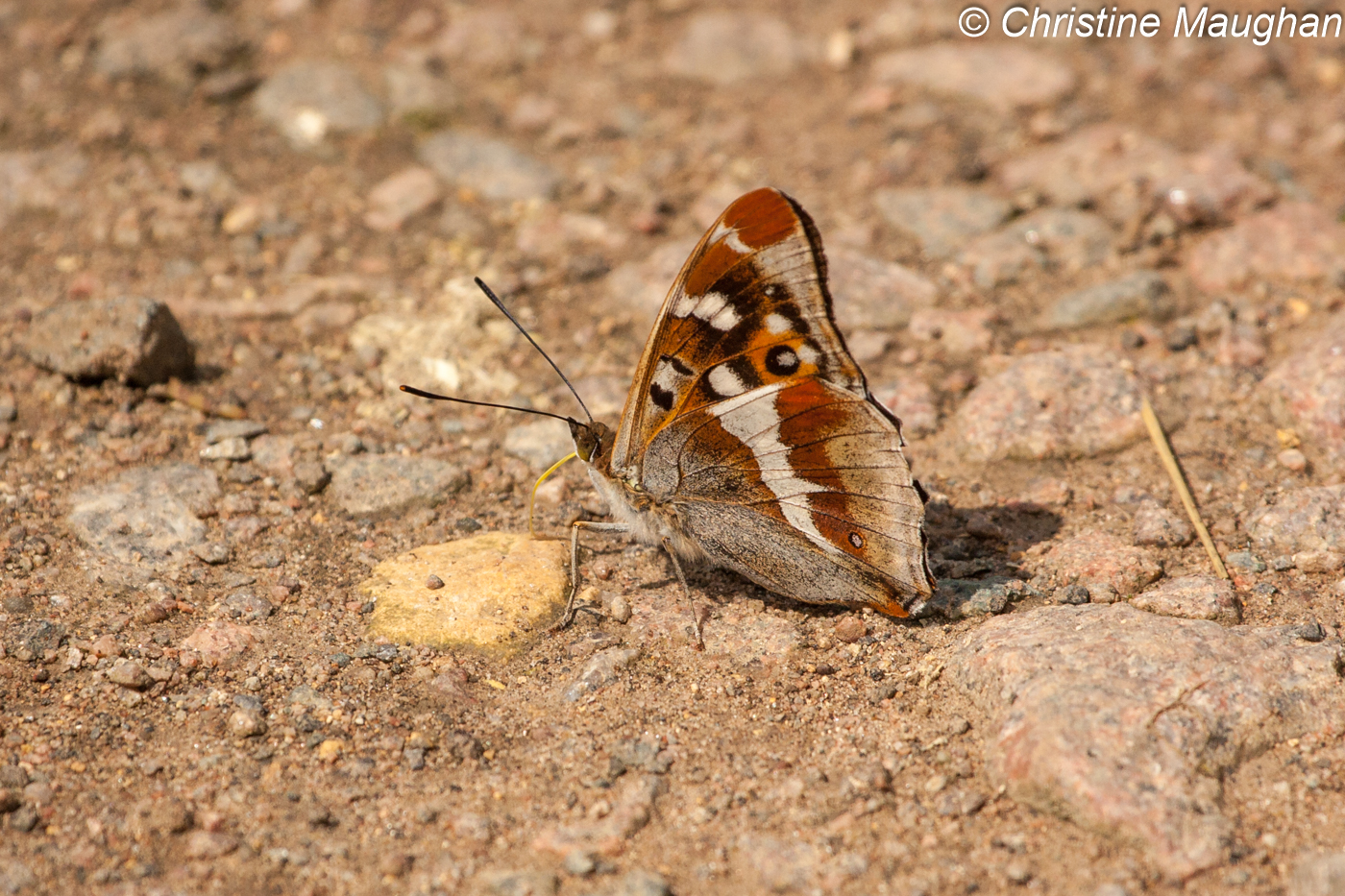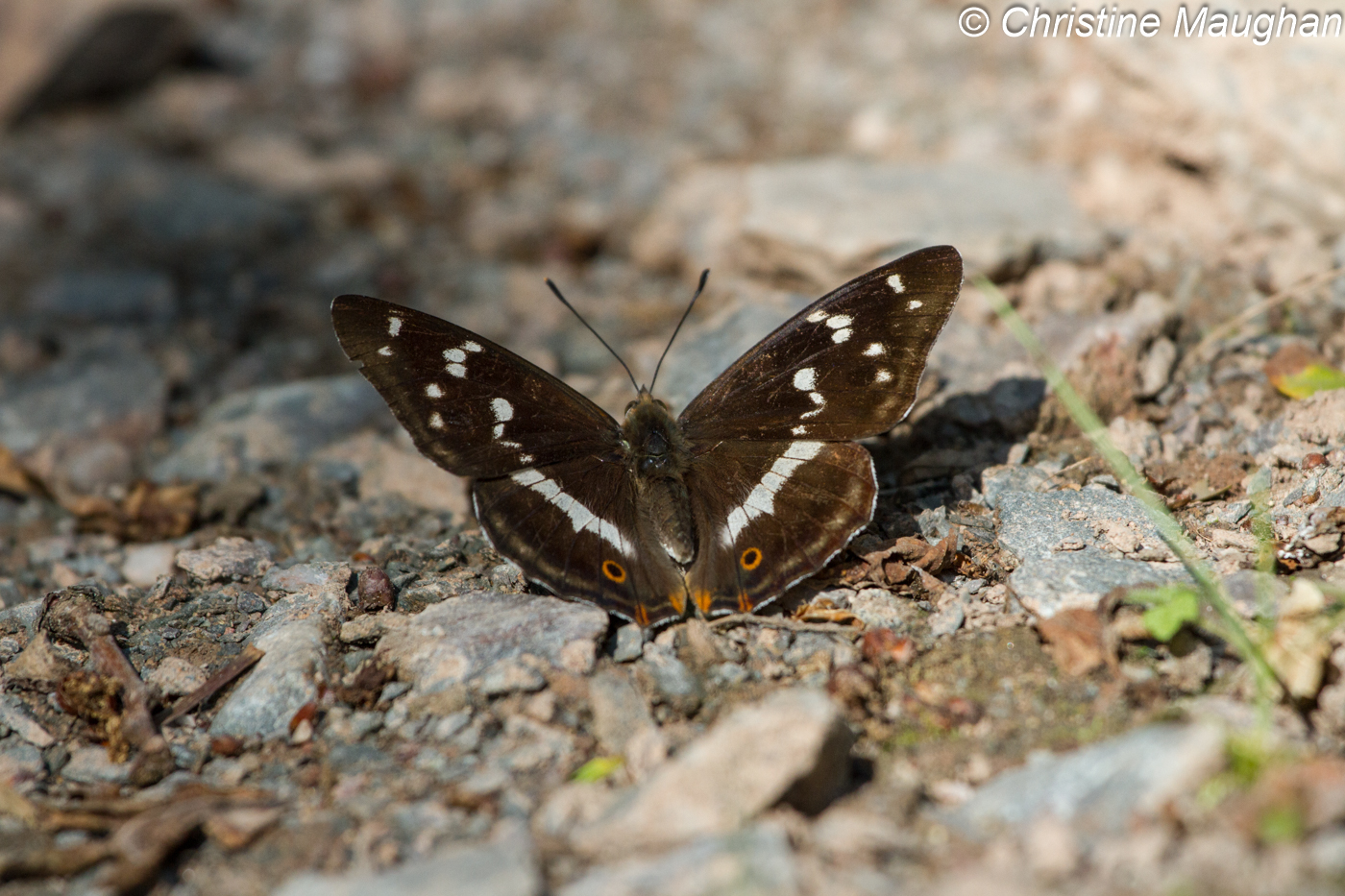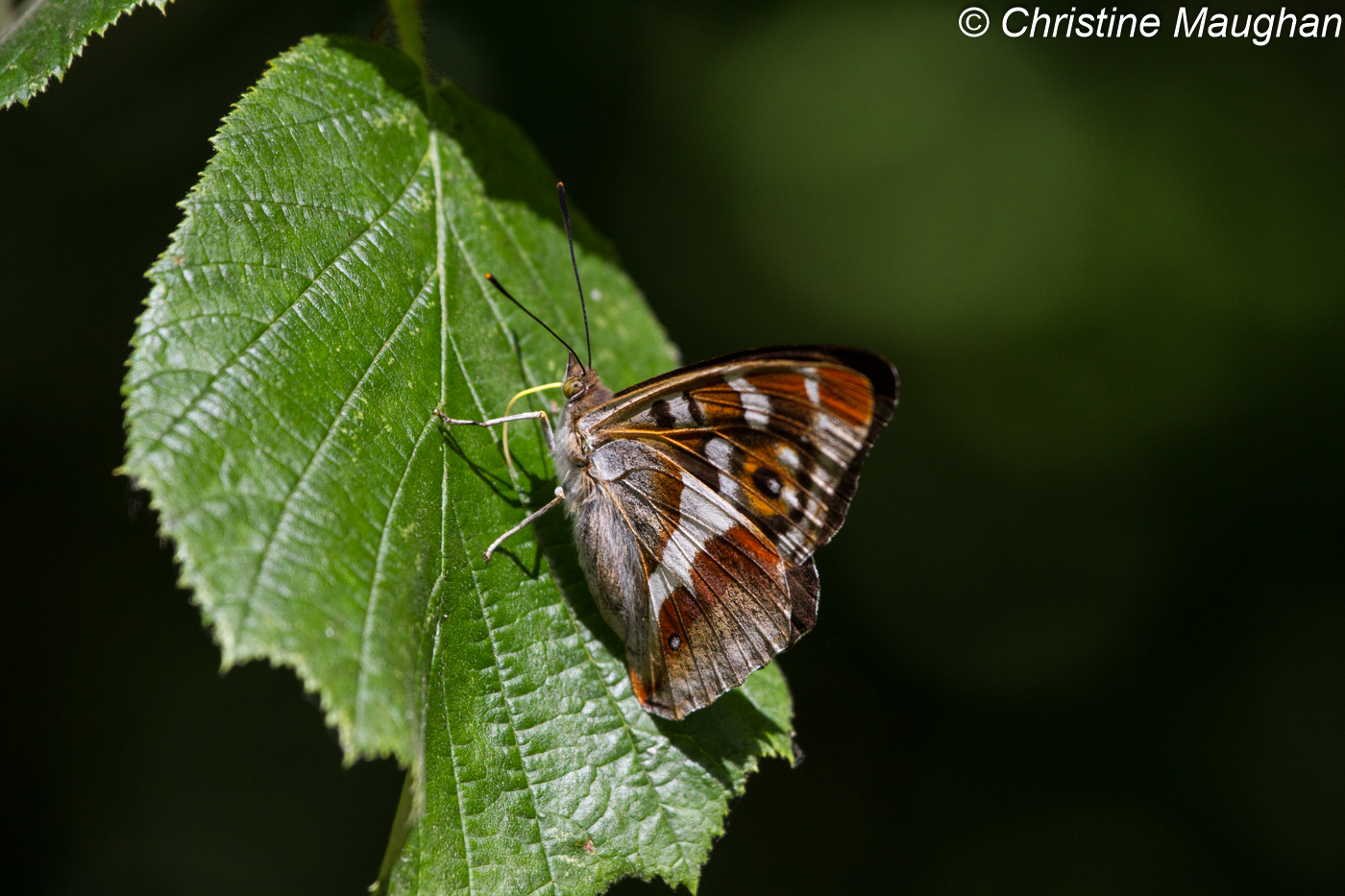
Purple Emperor Apatura iris
Habitat
The Purple Emperor is a very localised butterfly, well established in areas such as Northamptonshire to the south of the East Midlands area, and it appears to be moving gradually northwards through our region. It has been recorded in small numbers in Nottinghamshire and in Rutland since 2015. It is found in large mature broadleaved forests with sunny rides which support good growths of sallow, the caterpillar's food plant. It spends much of its time high in the canopy of large trees, but males are often most conspicuous during the early part of the flight period when they commonly descend to feed from damp puddles or animal dung.
Identification
The Purple Emperor is a much prized butterfly because of the rich iridescent purple sheen on the upper wings of the male. The amount of purple varies depending on lighting. Females lack the iridescence and appear as large dark butterflies with white bands across the upper wings, but the undersides of both sexes are similar. Purple Emperors have a powerful gliding flight, similar to White Admirals with which they can be confused.
Flight times
The flight period is from late June to the end of August.
Food plants
Eggs are laid singly on the upper edge of sallow leaves or occasionally Crack-willow.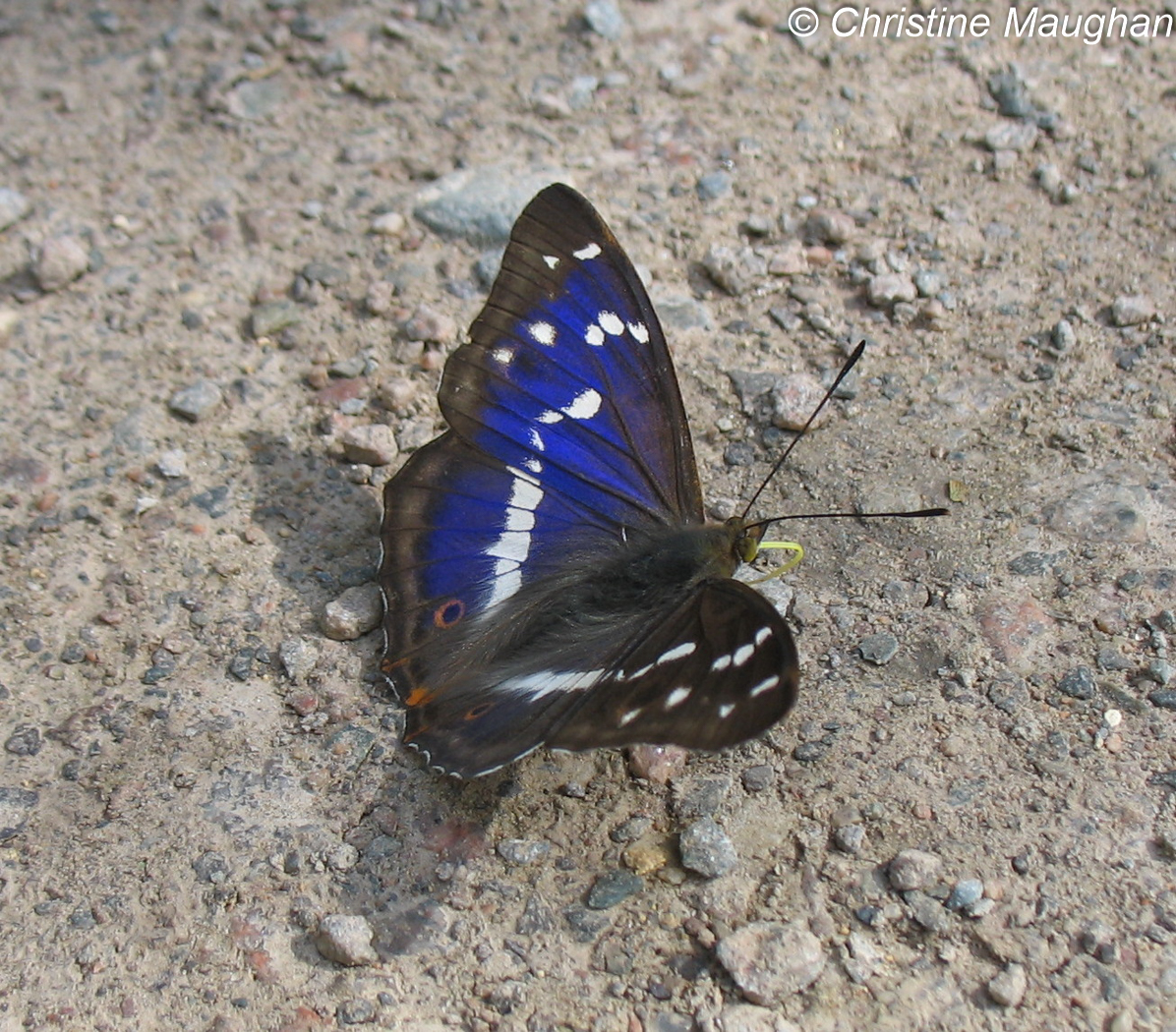
Distribution Maps
2015-2019
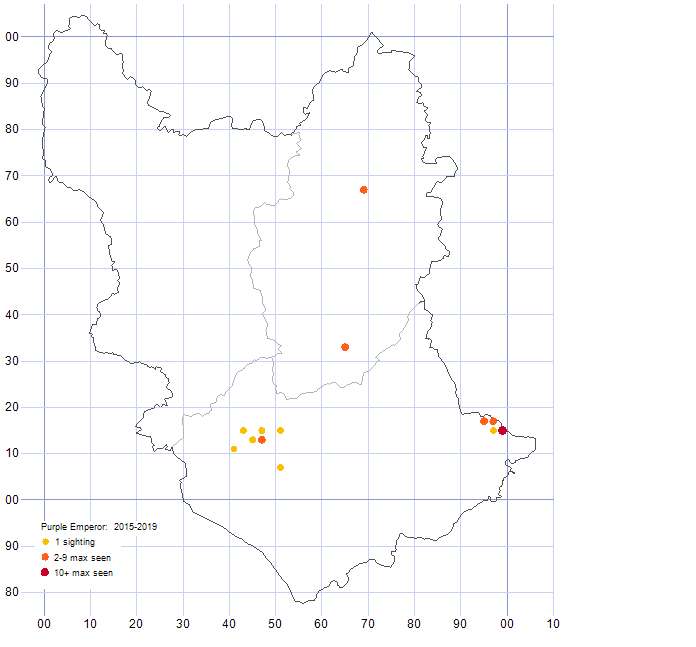
2005-2019
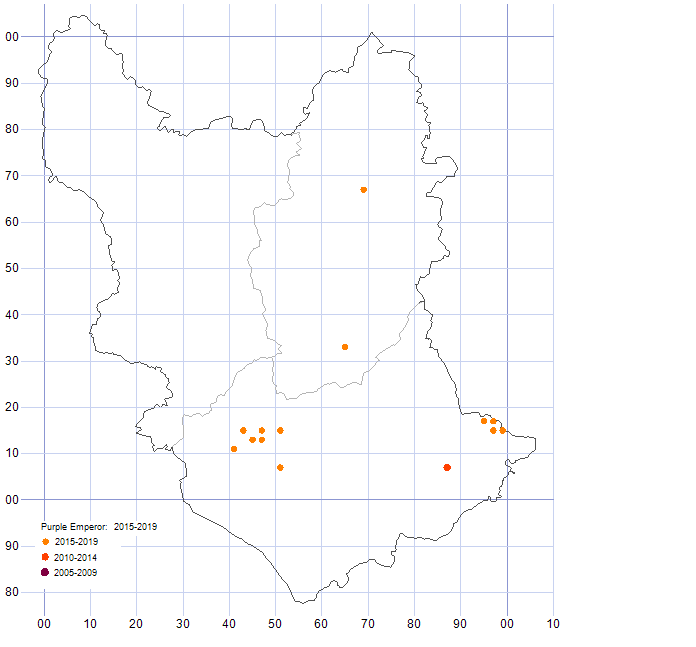
There were no records at all during the first five years of this comparison. The Purple Emperor is, however, making progress northwards through the region, now being recorded in Nottinghamshire and more widely in Leicestershire. As yet there are no records for Derbyshire.
2020-24

2010-24

Changes in distribution between 2010-2014, 2015-2019 and 2020-24
The colonisation of this species in the East Midlands during the last 15 years has been dramatic. From its first incursions into Leicestershire and Nottinghamshire since 2010 there has been considerable consolidation of its range in these two counties, and for the first time it has crossed over the border into south Derbyshire.
2015
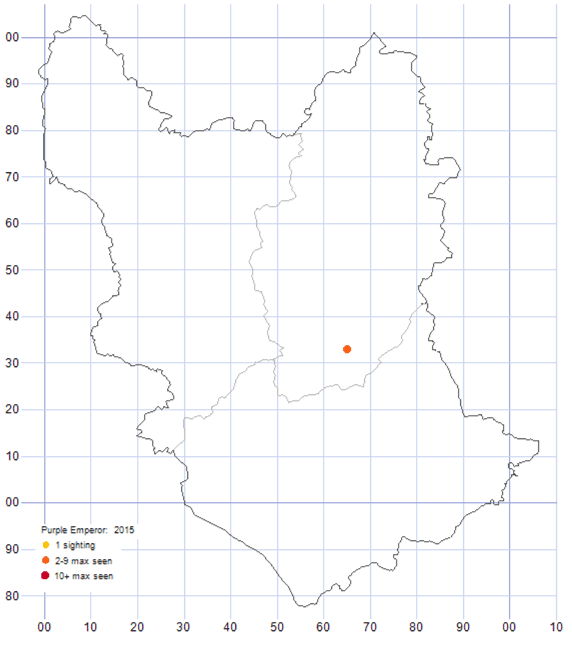
| No of tetrads | 1 |
|---|---|
| First sighting | 15/07/2015 |
| Last sighting | 25/07/2015 |
2016
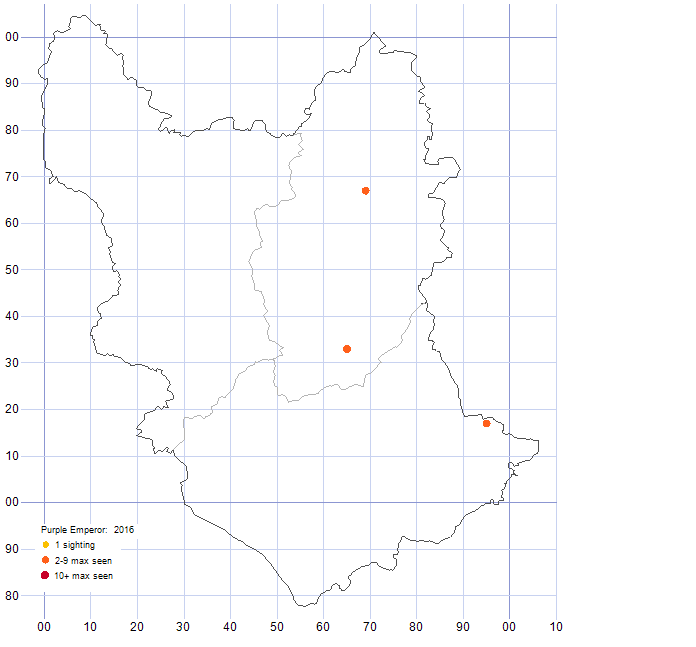
| No of tetrads | 3 |
|---|---|
| First sighting | 14/07/2016 |
| Last sighting | 12/08/2016 |
2017
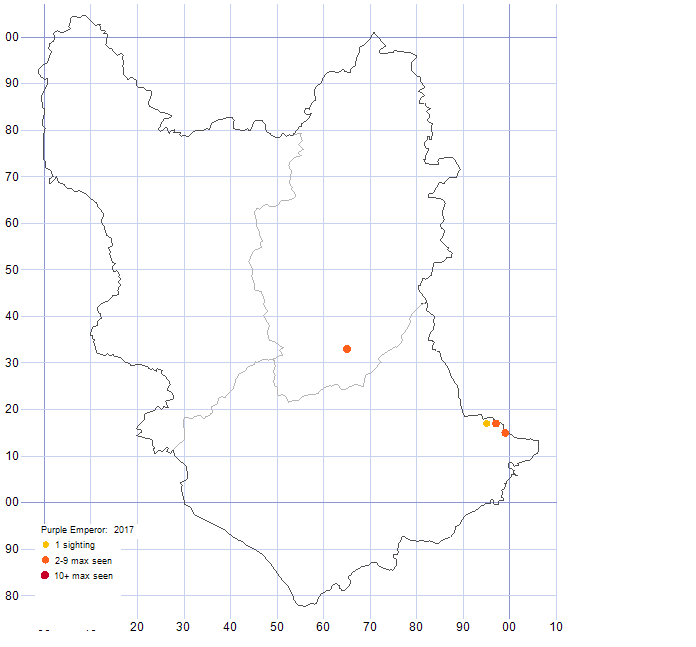
| No of tetrads | 4 |
|---|---|
| First sighting | 24/06/2017 |
| Last sighting | 17/07/2017 |
2018

| No of tetrads | 6 |
|---|---|
| First sighting | 27/06/2018 |
| Last sighting | 01/08/2018 |
2019

| No of tetrads | 8 |
|---|---|
| First sighting | 05/07/2019 |
| Last sighting | 03/08/2019 |
2020
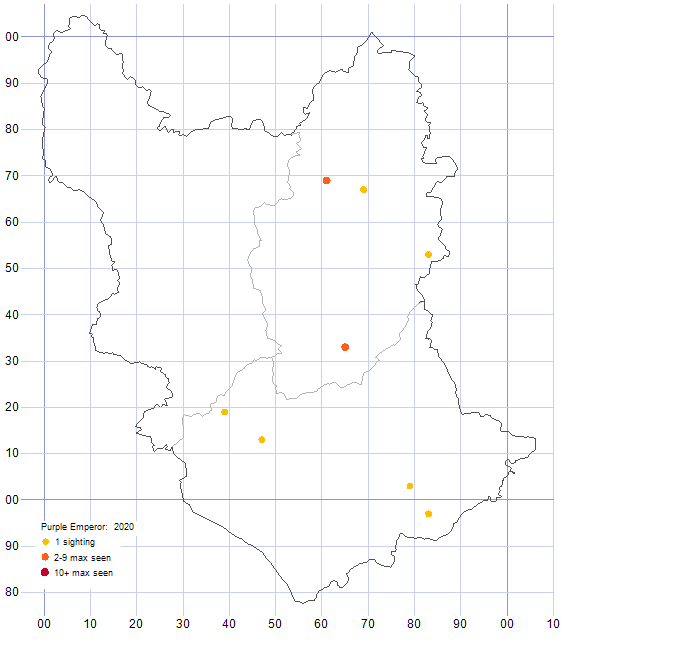
| No of tetrads | 8 |
|---|---|
| First sighting | 24/06/2020 |
| Last sighting | 26/07/2020 |
2021
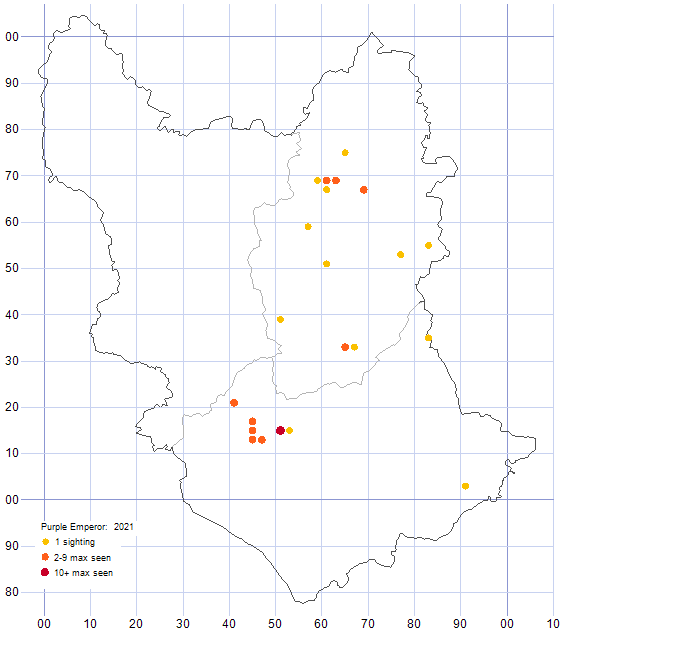
| No of tetrads | 22 |
|---|---|
| First sighting | 03/06/2021 |
| Last sighting | 05/08/2021 |
2022
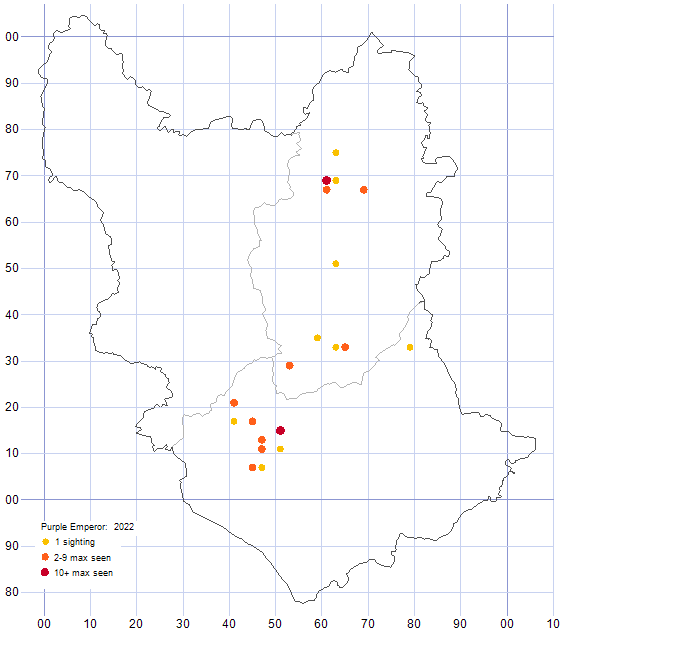
| No of tetrads | 27 |
|---|---|
| First sighting | 29/06/2022 |
| Last sighting | 27/07/2022 |
2023
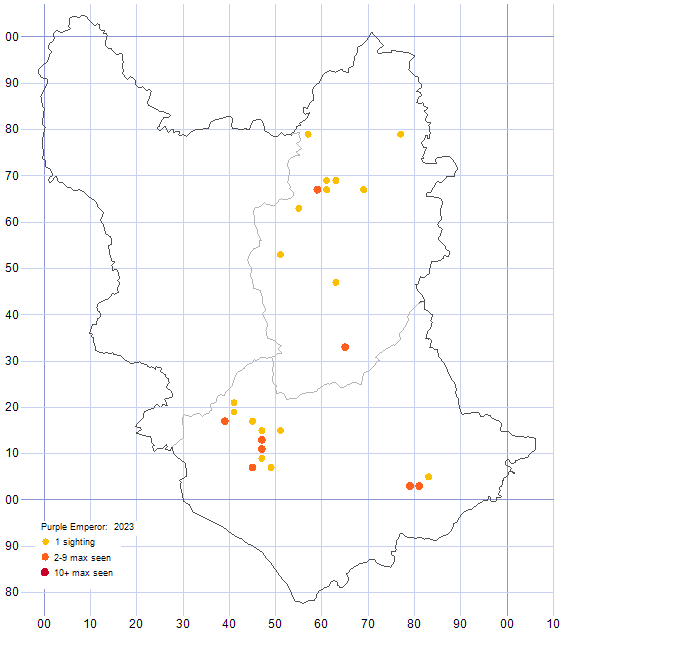
| No of tetrads | 25 |
|---|---|
| First sighting | 07/07/2023 |
| Last sighting | 26/07/2023 |
2024
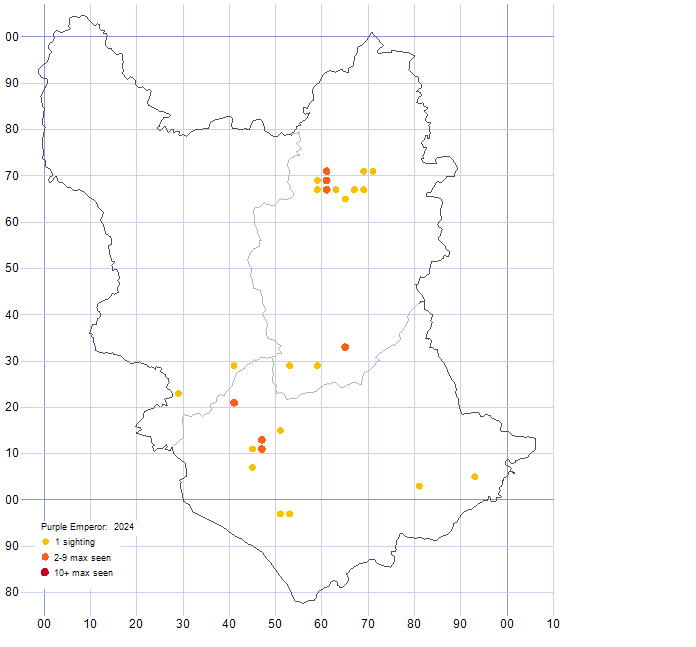
| No of tetrads | 26 |
|---|---|
| First sighting | 26/06/2024 |
| Last sighting | 28/07/2024 |

